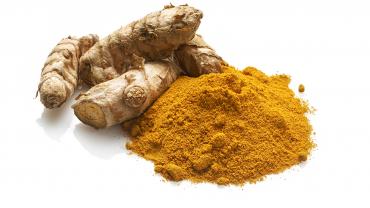
Curcumin, a polyphenol found in turmeric, has a long history of culinary and medicinal use. Recent research has investigated its potential to help a variety of chronic conditions, such as Alzheimer’s disease, diabetes, metabolic syndrome, cardiovascular disease, autoimmune conditions, and depression. These conditions have also been linked to chronic inflammation and excess oxidative stress. This has led to researchers investigating whether supporting the body’s antioxidant defense and anti-inflammatory pathways may also help these conditions.
Curcumin supports redox balance and promotes a healthy inflammatory response that provides one possible reason for its potential health benefits.* A systematic review and meta-analysis reviewed randomized controlled trials in patients with oxidative-associated liver diseases. The researchers concluded that “the results obtained from the present review revealed that curcumin can be effective in various types of oxidative associated liver disorders.” … “Experimental evidence indicates that curcumin exhibits its preventive and curative effect against oxidative associated liver diseases through various cellular signaling pathways.” This included the nuclear factor-2 erythroid-related factor-2 (Nrf2) pathway. The researchers found that curcumin led to significantly decreased markers of inflammation, including interleukin-6, high-sensitivity C-reactive protein, oxidative stress, and malondialdehyde (MDA), demonstrating potential anti-inflammatory and antioxidant properties.
There may be multiple mechanisms by which curcumin affects redox balance and inflammation, but one may be that it helps activate Nrf2. The transcription factor Nrf2 is involved in the expression of around 500 genes involved in the coding of proteins that support redox balance, detoxification, stress response, and inflammation. It also acts as a major sensor of oxidative stress and the master regulator of the cellular antioxidant response. The main regulator of Nrf2 is Kelch-like ECH-associated protein 1 (Keap1). When there is no stress, Nrf2 levels are kept low, and cytoplasmic Keap1 sequesters Nrf2. When a cell experiences oxidative stress, Nrf2 becomes free to translocate to the nucleus, activate target genes, and downstream regulators of redox balance and inflammation.
Curcumin activates Nrf2 by targeting the Keap1-Nrf2 binding complex. It alkylates a protein thiol, binding to cysteine 151 (Cys151) to initiate the translocation of Nrf2 to the nucleus. Once Nrf2 is in the nucleus, it can promote the activation and expression of key antioxidant genes. Curcumin may also activate the Nrf2 pathway by impacting Nrf2 mediators and influencing target genes.
Human clinical trials have found curcumin supplementation activates Nrf2 and its associated genes. In a study of 14 patients with diabetes, who have been diagnosed with or who are at high risk of diabetic kidney disease, supplemented with 500 mg/day of curcumin for 15 to 20 days led to a reduction in urinary albumin excretion and a reduction in MDA levels and inflammatory markers. The researchers also found an increase in the NRf2-activated gene NAD(P)H quinone oxidoreductase 1 (NQO1), demonstrating activation of the Nrf2 anti-oxidative system. A small study on healthy participants aged 18 to 27 years demonstrated that an acute dosage of 4 g of curcumin led to an increase in the expression of Nrf2 and antioxidant genes that it activates including NQO1 and heme oxygenase-1.
Free radicals have the potential to cause cellular damage and increase the risk of developing chronic diseases associated with oxidative stress. Polyphenols, such as curcumin, support the body’s endogenous antioxidant defense system by activating Nrf2 and its associated genes and downstream mediators. Thus, adding turmeric to meals or supplementing with curcumin may support antioxidant status and promote a healthy inflammatory response.*
By Kendra Whitmire, MS, CNS